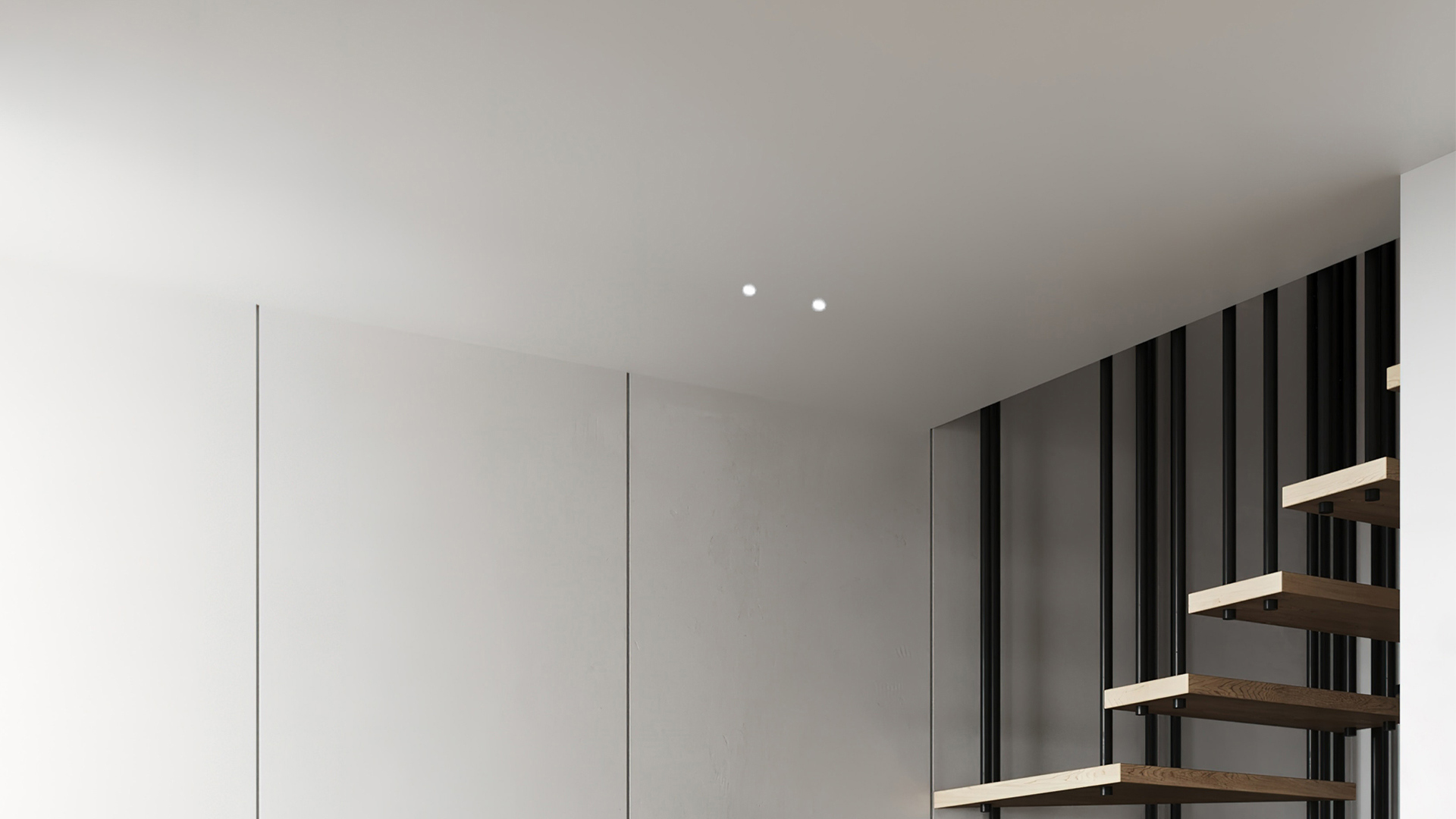
The tavern is one of the most complex rooms to light within a residential project. Often located in the basement or semi-basement, its structure poses specific challenges: limited natural light, low ceilings, traditionally dark materials (brick, stone, wood), and a wide variety of uses ranging from social gatherings to relaxation areas, small kitchens, or hobby spaces.
For an architect or designer, the goal is to combine visual comfort, energy efficiency, and aesthetic quality. In this context, LED technology is the most rational choice: it guarantees durability, low energy consumption, and a wide range of integrated solutions that make it possible to shape light within the space.
In this article, we’ll analyze the main lighting solutions applicable to a tavern, with practical examples of products and design approaches.
Lighting the social area: wall lamps for diffused light and a cozy atmosphere
The tavern is often designed as a dining room or an area for large tables. Here, the lighting must be uniform, welcoming, and glare-free.
LED wall lamps are ideal for achieving diffused lighting. Installed at mid-height, they create a soft beam that expands across the wall surface, enhancing the texture of materials such as exposed brick, troweled plaster, or natural stone.
A technical advantage is the possibility of choosing fixtures with both upward and downward light emission, balancing the perception of the room’s volume. With a clever symmetrical arrangement, the architect can define the rhythm of the space without needing large central hanging fixtures, which would feel intrusive in low-ceiling environments.
The relaxation corner: recessed spotlights for functional, subtle lighting
Many taverns feature a relaxation area with a sofa, TV, or fireplace. Here it is important to create functional yet discreet lighting that doesn’t interfere with the screen or produce annoying reflections.
Ceiling-recessed spotlights provide an elegant solution. Thanks to their compact size and flush design, they integrate seamlessly into surfaces. The focused light can be aimed precisely at a coffee table, bookshelf, or decorative element.
From a technical standpoint, it’s advisable to use different optics: narrow beams to highlight details, and wider floods for general lighting. The use of dimmers and control systems makes it possible to adjust brightness depending on the activity (reading, conversation, watching TV).
Our LED spotlights come in different wattages and beam angles. Their high color rendering (CRI>90) ensures faithful reproduction of materials, which is especially important in spaces dominated by wood and fabrics.
The kitchen or bar area: direct light and high efficiency
More and more taverns now include a fully equipped kitchen or a small bar for entertaining guests. In this context, lighting becomes an operational tool.
Ceiling-mounted LED fixtures are perfect for illuminating worktops, shelves, and counters. They allow precise beam direction, avoiding shadowed areas on work surfaces.
From an architectural perspective, a layout of spotlights aligned with the bar or kitchen counter highlights the volume and makes the space functional without sacrificing design. Combined with diffused ambient lighting, the result is an optimal balance of practicality and atmosphere.
Corridors and stairs: step lights and wall recessed fixtures for safety and visual continuity
The tavern is often accessed via internal stairs or corridors. Along these paths, lighting must ensure safety and orientation without being invasive.
Recessed wall step lights are the most effective choice. Installed about 30–40 cm from the floor, they provide grazing light that guides movement and reduces the risk of tripping.
This type of fixture also adds a scenic effect: the path is defined by slivers of light that interact with the floor, making the descent into the tavern more atmospheric.
Our recessed step lights have a minimalist design and can be customized with different finishes. Thanks to ceramic plaster bodies, they blend seamlessly with the wall surface, creating an almost invisible visual impact.
Niches and architectural details: MINILED to highlight features
Many taverns showcase distinctive elements: niches, barrels, wine racks, artworks, or textured walls. A careful lighting design must not overlook these details.
Our MINILED fixtures bring three-dimensionality to decorative features. The use of micro-LED spotlights or integrated strip lights in profiles creates controlled contrast, guiding the gaze and enriching the spatial perception.
From a technical perspective, it is important to carefully calculate distances and beam angles to avoid overly narrow cones or excessive glare. The combination of diffused light with targeted accents is the most balanced formula.
Scenic lighting: layering light and digital control
Beyond individual fixtures, a tavern lighting project must consider light layering. The so-called lighting layering approach involves combining three levels:
Ambient light (diffused wall lamps or recessed fixtures)
Accent light (spotlights and strips to highlight architectural features)
Task light (directional spots for work surfaces)
Digital control through dimmers or home automation systems allows for quick transformations of the atmosphere: from convivial dining to movie projection, from wine tasting to study space.
Conclusions
Lighting a tavern is not just about ensuring proper visibility: it means transforming a space often penalized by its location into a welcoming, functional, and visually striking environment.
Our lighting systems allow designers and architects to shape light according to different areas and specific needs. The combination of minimalist design, innovative materials, and advanced technologies makes each project unique, meeting the most refined expectations of contemporary clients.
With an integrated approach, the tavern can become not just an additional room, but a true showcase space, enhanced by light as a primary architectural element.